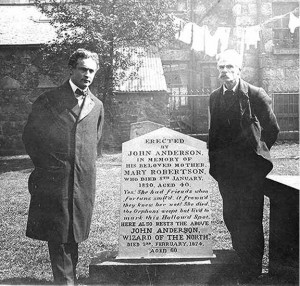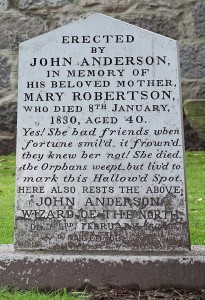John Henry Anderson was born into a family of humble means near Kincardine O’Neil, west of Aberdeen, in 1814 and was orphaned at the age of 10. After working as a herdsboy and then a blacksmith he started working in a travelling theatre company when he was only 16. Here he started to develop his skills as a magician. At the age of 23 he performed magic tricks for Lord Panmure at Brechin Castle, who was very impressed and encouraged him in his career. So John Anderson decided to set up his own touring show which lasted for 3 years. He settled in London, opened the New Strand Theatre and was dubbed ‘The Great Wizard of the North’ by no less than Sir Walter Scott. Sometimes he used the stage name of Professor Anderson.
Not only was he an expert showman, he was very good at publicity and advertising making him one of the first magicians to achieve world renown, including a command performance for Czar Nicholas 1. He toured widely in Europe, North America, Australasia and Russia. His repertoire included many tricks and illusions covering a wide range. Some of these were his own invention, whilst others he took and developed from others. One of his most popular was to appear to catch a bullet fired from a gun. He is, however, given the honour of devising the ‘rabbit out of a hat’ illusion together with a number of derivatives from it, such as flowers appearing from his fingers and a goldfish bowl, complete with water and fish.
John Anderson died in 1874 a few months short of his 60th birthday. He was buried next to his mother in the St Nicholas Kirkyard. 1874 was also the year of the birth of Harry Houdini the famous escapologist who was a great admirer of the work of John Anderson. Indeed he described him as one of his inspirations. On a visit to Aberdeen in 1909 he visited the grave which had fallen into disrepair, so he made arrangements for its upkeep. The two photographs show the grave as it is today and a press photograph of Harry Houdini at the side of the grave after it had been repaired.

